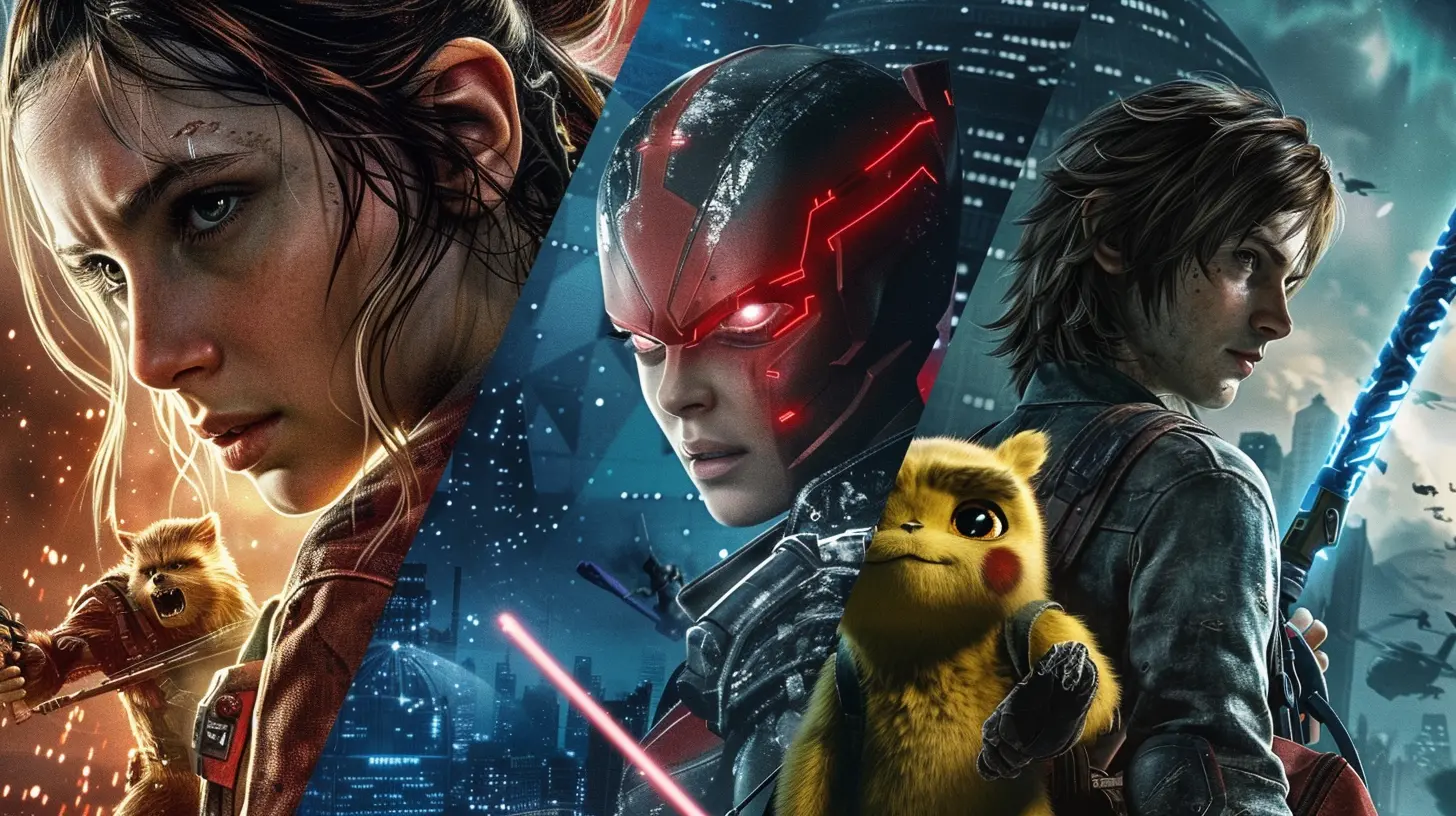Most Influential Video Games in Teen Culture
19 August 2025
Video games have come a long way since the days of pixelated arcade screens and 8-bit soundtracks. These days, they’re not just entertainment—they're part of everyday life, especially for teens. Whether it's casual mobile games during school breaks, intense multiplayer matches after homework, or staying up late to finish a story-driven campaign, games have become deeply woven into teen culture.
But what are the games that really made waves? Which titles didn’t just pass the time but actually helped shape the mindset, fashion, language, and interactions of an entire generation?
Let’s dive into the most influential video games in teen culture—the ones that left a massive mark not just on screens, but in real life too.
Why Video Games Matter So Much to Teens
Before we jump into the actual list, let’s talk about why video games are so impactful for teens in the first place.Think about it—being a teen is tough. You're juggling school, social life, expectations, and figuring out who you are. Games offer more than escape; they give teens a place to belong, express themselves, and connect with others.
They can be a creative outlet (hello Minecraft), a competitive arena (looking at you, Fortnite), or even a storytelling medium that hits you right in the feels (The Last of Us, anyone?). Plus, gaming culture is incredibly social now. It’s no longer about playing alone—it's about squads, voice chats, memes, and online communities.
So, with that in mind, let’s take a closer look at the games that have truly shaped today’s teen experience.
1. Fortnite – The Cultural Juggernaut
Let’s start with the obvious one. Fortnite isn’t just a game—it’s a full-blown phenomenon.Why It's Influential:
- Battle Royale Craze: Fortnite popularized the battle royale format for the masses. 100 players drop in, only one survives. Teens couldn't get enough.- Social Hangout Space: It’s more than shooting and looting. Fortnite became a digital hangout spot—kind of like the mall for Gen Z.
- Pop Culture Collabs: Marshmello concerts? Star Wars events? Travis Scott in the sky? Fortnite blurred the lines between gaming and real-world entertainment.
It even brought dances like the “Floss” and “Orange Justice” into classrooms and playgrounds. If that’s not cultural influence, what is?
2. Minecraft – The Digital LEGO Dream
Minecraft isn't just a game; it's a sandbox for the imagination.Why It's Influential:
- Creativity and Freedom: Teens get to build anything—from medieval castles to working calculators (yes, really). It sparks creativity like few other games.- YouTube & Twitch Fame: Minecraft content creators became household names. Think Dream, Technoblade, and TommyInnit.
- Social Learning: From team builds to mod packs, Minecraft taught collaboration, coding, and problem-solving—without anyone realizing they were learning.
Plus, Minecraft has staying power. Released in 2009, and it’s still one of the most played games among teens.
3. Among Us – The Pandemic Phenomenon
When the world locked down, Among Us opened up.Why It's Influential:
- Social Deduction Gameplay: It taught us that lying (in-game, of course) can be hilarious. “Sus” became a permanent part of teen slang.- Low Barriers: It’s free, runs on mobile, and anyone can learn to play within minutes. That’s a winning combo for accessibility.
- Bonding During Isolation: When teens were physically separated in real life, Among Us kept them connected—through deception, betrayal, and laughter.
Even politicians and celebrities streamed it. Talk about cultural reach.
4. Roblox – The Platform, Not Just a Game
Roblox is often misunderstood by adults, but teens (and even tweens) live in it.Why It's Influential:
- User-Generated Everything: Games within games. Teens can create their own levels, characters, and stories. It’s DIY game design on steroids.- Massive Social Platform: From roleplaying games like Brookhaven to obby challenges, Roblox is where millions of teens hang out every day.
- Monetization and Business Skills: Teens are actually making money by creating games on Roblox. Talk about turning hobbies into hustles.
It’s less a game and more a universe where young creators thrive.
5. Call of Duty: Warzone – The Teen Battlefield
Call of Duty has been around forever, but Warzone really locked in with teen audiences in recent years.Why It's Influential:
- Free-to-Play Entry: Making it free brought in a massive new audience.- Hard-Hitting Action: Teens love the fast-paced, realistic combat. It’s intense, competitive, and packed with adrenaline.
- Squad Goals: Playing with friends, mastering loadouts, and pulling off clutch wins? Pure teen bonding.
Plus, CoD is responsible for more in-game rage and triumph screams than probably any other franchise.
6. The Sims – Virtual Life Lessons
Surprised? You shouldn’t be.Why It's Influential:
- Life Simulation: Teens get to experiment with careers, relationships, and even interior design. It's like sandbox adulthood.- Self-Expression: With full control over appearance, homes, and love interests, it's a safe place to explore identity.
- Meme Culture: Sims’ weird bugs and language (Simslish, anyone?) are meme gold.
It’s goofy, relatable, and oddly addicting. And yes, we’ve all removed the pool ladder at some point.
7. League of Legends – Esports Gateway Drug
MOBA games are intense, strategic, and slightly addictive—LoL is king among them.Why It's Influential:
- Esports Popularity: League helped launch esports into the mainstream. Teen gamers started dreaming of pro careers.- Team Strategy & Skill: It’s not just about who can click fastest. It’s about coordination, learning champions, and reading the map.
- Emotional Highs (and Lows): Every win feels earned. Every loss—personal.
Some teens grew up watching LoL tournaments the way older generations watched football. That says a lot.
8. Grand Theft Auto V – The Rebellious Rite of Passage
Let’s face it, this one’s controversial—but undeniably influential.Why It's Influential:
- Open-World Chaos: Teens love freedom, and GTA offers a giant playground with barely any rules.- Online Mayhem: GTA Online added another layer—heists, custom characters, and wild role-play communities.
- Pushes Boundaries: Yes, it’s mature, but that’s part of what made it feel so appealing to teens pushing against limits.
It’s the video game version of sneaking a beer at a party—rebellious, thrilling, and unforgettable.
9. Animal Crossing: New Horizons – Cozy Escapism
When the world felt scary, Animal Crossing said, “Let’s just pick some fruit and catch bugs instead.”Why It's Influential:
- Wholesome Vibes: Teens were drawn to its calm, pleasant world—a break from school stress and social drama.- Customization & Creativity: Whether it was designing clothes or landscaping islands, it let teens express their unique style.
- Social Sharing: Visiting friends’ islands and showing off your creations was pure serotonin.
It became the comfort food of games—and a digital way to stay connected, especially during the height of the pandemic.
10. The Legend of Zelda: Breath of the Wild – Adventure Reimagined
Not every influential game is online or multiplayer. Some change hearts in quiet, powerful ways.Why It's Influential:
- Freedom to Explore: Breath of the Wild let teens climb anything, go anywhere, and solve puzzles however they wanted.- Narrative & Aesthetics: The art, music, and storytelling inspired a new appreciation for game design.
- Inspiration to Think Differently: It encouraged experimentation and creative problem-solving, making it feel like more than just a game—it was an experience.
BOTW showed that games could be art, and teens took notice.
How Gaming Continues to Shape Teen Identity
So what do all these games have in common?They aren’t just fun—they speak to deeper needs. They let teens connect, create, compete, and chill. They offer a sense of achievement and community. They influence the way teens talk, dress, and even dream.
More than that, games are now a core part of youth culture. They drive memes, shape social interactions, and even dictate career goals. Whether it’s streaming, esports, game design, or digital art—many teens are finding a future through pixels and code.
And let’s be real—games aren’t going anywhere. If anything, they’re becoming more inclusive, innovative, and globally connected than ever before.
Final Thoughts
The most influential video games in teen culture are more than just popular—they’ve sparked creativity, formed friendships, and helped shape the generation growing up with controllers in hand.So the next time someone says, “It’s just a game,” remember—it might just be someone’s safe space, stage, or spark of inspiration.
And who knows? The next influential game might be loading up right now on someone’s screen.
all images in this post were generated using AI tools
Category:
Games For TeensAuthor:

Madeleine McCaffrey
Discussion
rate this article
2 comments
Nala Green
This article highlights key titles shaping teen culture, illustrating the profound impact of gaming on youth identity.
November 28, 2025 at 4:27 AM

Madeleine McCaffrey
Thank you for your insight! I'm glad you found the article highlights the significant role of gaming in shaping teen identity.
Ulrich Webster
This article offers a fascinating look at how video games shape teen culture. It highlights influential titles that resonate with players, fostering connections and creativity. Great insights on the impact these games have had on social dynamics and personal development. Thank you for sharing!
August 22, 2025 at 5:10 AM

Madeleine McCaffrey
Thank you for your thoughtful comment! I'm glad you found the article insightful and appreciate your engagement with the topic.

